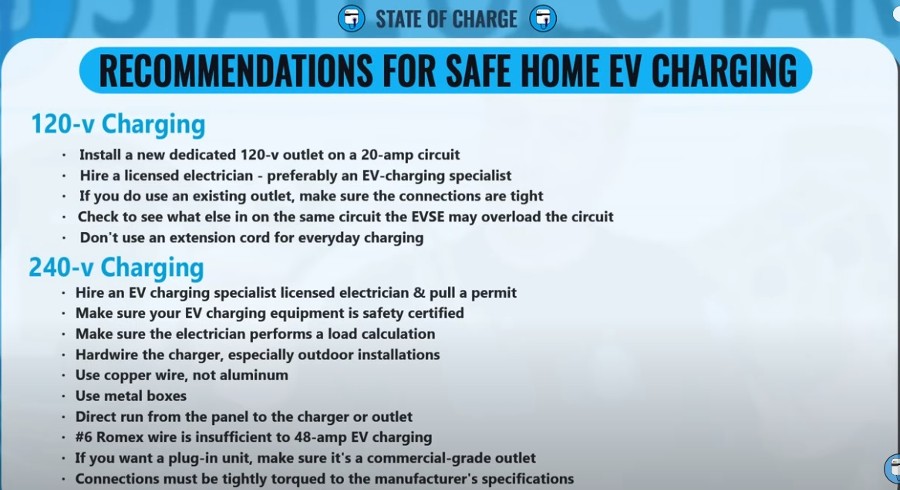How To Safely Charge Your Electric Vehicle
2 Min. Read
Electric vehicle charging is safe, as long as it’s done properly. Qmerit’s Matt Trout partnered with Tom Moloughney—host of YouTube’s “State of Charge”—to discuss how to make sure your EV charging equipment is installed safely and properly.
Watch the interview in the video above, and scroll down to read more.
How To Safely Charge Your Electric Vehicle
Now that more and more EV drives are charging at home we’re starting to see failures in charging equipment, in outlets, and in disconnects. It’s a real cause for concern, but if done safely by someone who understands not just electrical work, but specifically electric vehicle charging electrical work, you’re in good hands.
Hardwired vs Plug-in EV Charging Options
Hardwired chargers offer the highest reliability and less visible cords. Plug-in chargers offer portability, but you are limited to a 32 or 40 Amp charger. 48 Amp chargers charge faster than a 32 Amp. Talk to an electrician to verify your home’s electrical capacity or buy an adjustable charger for flexibility.
Other takeaways:
- Outlets are not meant for continuous plugging in and out, and over time the connections can loosen.
- If you want a plug-in unit make sure it’s a commercial grade outlet.
- Not all NEMA 14-50 outlets are created equal.
- #6 Romex wire is not up to code for 48 Amp EV charging.
- Plug-in units are great for road trips and vacations, but have a hardwired unit permanently installed at home.
View your options on the Qmerit EV Charger Store.
GFCI Protected Outlets
Outlets are required to have GFCI protection in the latest code update, and it’s more cost-effective to go hardwired. Additionally, GFCI-protected NEMA 14-50 outlets may cause nuisance tripping.
- Hardwiring your EV charger reduces the number of possible failure points.
- GFI protection is built into EV charger hardware in hardwired products.
- GFCI breakers are required when installing new NEMA 14-50 outlets. These are prone to trip, which is a big headache over time.
Recommendations for Safe EV Charging at Home
If you have any concerns about existing or future EV charging projects, it’s strongly recommended to call a certified electrician for a consultation. The peace of mind they can give you after opening up your electrical panel and analyzing your situation is priceless.
- For NEMA 14-50 installs, open the outlet after 6 months of use and check the connection.
- Expansion and contraction may occur, you may need to tighten screws and retorque.
- If you don’t drive often and plan to charge with Level 1, have a brand new circuit installed at your home.
#1 Trusted EV Charger Installer in North America – Qmerit
As the largest network of certified EV charger installers in North America, Qmerit is the most trusted EV charger installation partner recommended by automakers, EV charger manufacturers, utilities, businesses, and homeowners alike.
But don’t just take our word for it. Rated #1 in customer satisfaction, Qmerit’s experienced network of certified electricians has installed more than 450,000 EV charging stations in homes and businesses across the U.S. and Canada!
Give us a call at (888) 272-0090 or complete our online EV assessment to find out why we’re North America’s most trusted EV charger installation service provider today!

